From the JAYwalk
Back Porch Takes Center Stage

Ohio Wesleyan University’s first artist-in-residence, Andrew Wilson ’13, smiles broadly when he discusses the inspiration for his Back Porch outdoor sculpture—a 14-foot high, 8-foot wide, and 8-foot deep metal monument that honors generations of OWU Black lives and legacies.
“The back porch of the House of Black Culture was an important space for community, socializing, and rest,” says Wilson, who studied fine arts at OWU and later earned a master of fine arts degree from the University of California, Berkeley.
“It was a liminal space between outside and inside where we could be both highly visible and invisible. It was a space of respite for so many. Back Porch is a way to honor this space and its importance to Black life at Ohio Wesleyan.”
The Corten steel cuboid sculpture, which stands on the lawn outside Elliott Hall, was dedicated at a ceremony October 2.
The size of the artwork is based on the volume of the original screened-in back porch at the House of Black Culture, a residential refuge for Black students and their allies for more than 50 years and rebuilt in 2019.
The monument’s location on Ohio Wesleyan’s academic campus also is significant, Wilson says.
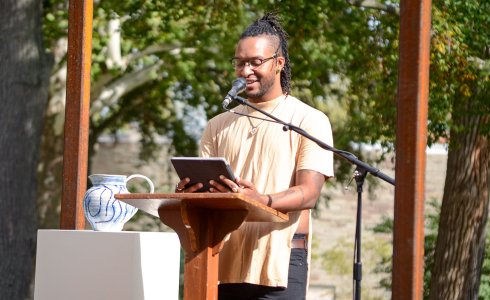
“This work becoming part of the visual landscape of the academy and the area of serious thought and study will place Black space within those parameters as well,” he says. “Visibility and representation are important and valuable tools to see oneself as part of the whole.”
Wilson created and installed Back Porch with assistance from sculpture professor Jonathan Quick. Together, they spent months building the piece inside Haycock Hall. In June they used an industrial forklift to move the artwork and install it.
Quick says it was rewarding to work with Wilson to create public art with such an important message. “It is reminiscent of reductive minimalist sculpture,” Quick says. “It’s meaning isn’t immediately accessible, but it is powerful.” He believes once people read the bronze plaque explaining Back Porch, they will be struck by its symbolism and significance in recognizing Black space and Black lives on campus.
Wilson’s artist residency and sculpture creation were supported by The Ebb and Teena Haycock Public Art Endowment, which Lorry Haycock Luikart ’73 created in 2020 in memory of her father and mother. Ebb Haycock, a fine arts professor, created OWU’s first foundry and ran it for more than three decades until his retirement in 1985; Teena Haycock served as a secretary of the Theatre Department.
“I’m very grateful that the Public Art Fund, initiated in my parents’ names could support this endeavor,” she says. “Ebb and Teena were civil rights proponents and next-door neighbors and close friends with B.A. Jones, for whom, of course, the House of Black Culture is named. Thanks to Andrew’s activism, Rock’s open heart and mind, and the blood, sweat, and tears of Professor Jon Quick, this important addition to OWU’s campus has come to be.”
A Summer of Science for 53 Students
Summer science research was back in full force this year, with 53 students and 18 faculty members working together in campus labs, in the field, and at other universities. All of the students presented their work at the Patricia Belt Conrades Summer Science Research Symposium in September. A few of the projects are shown here:
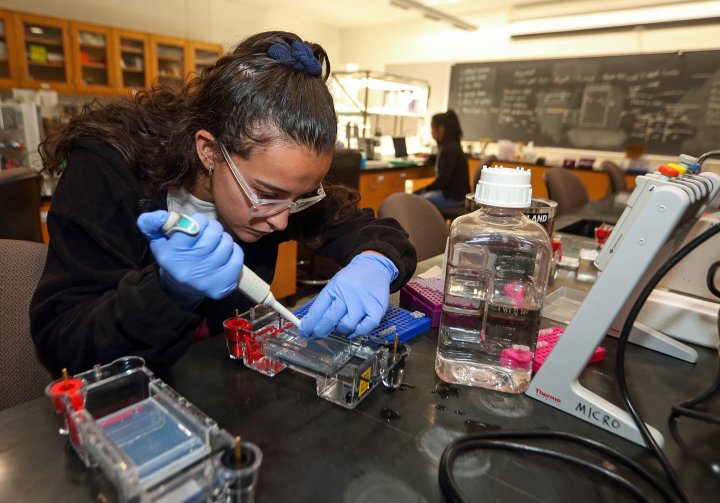
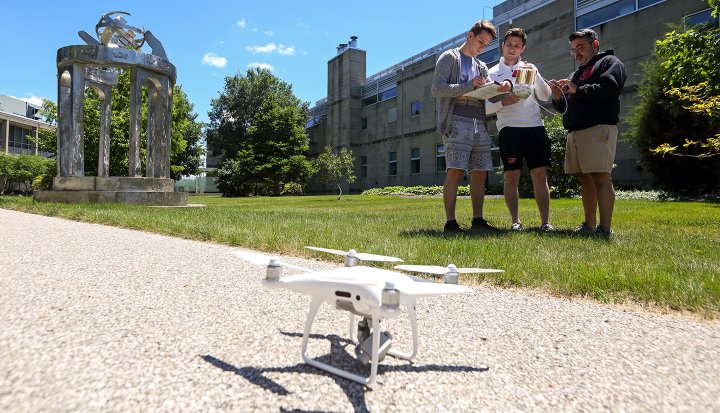
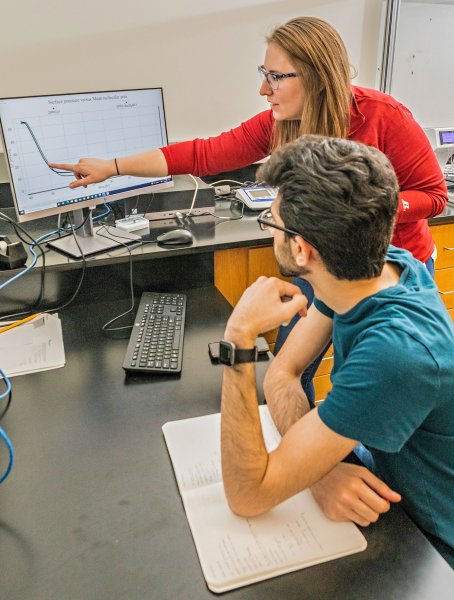
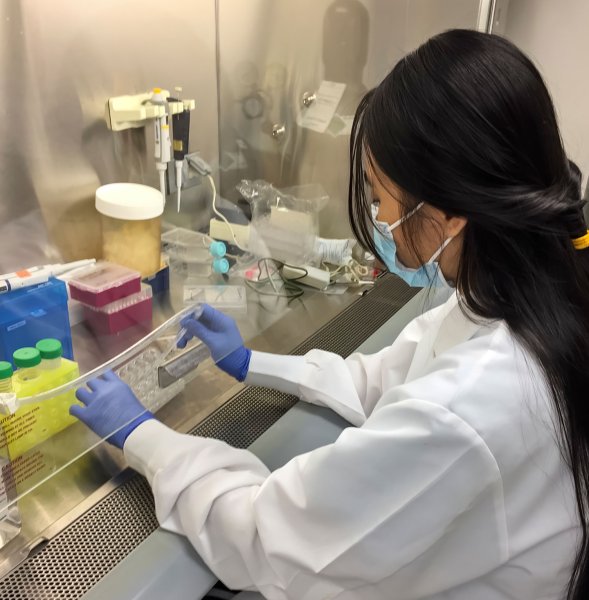
Commencement Combo Celebration
These two photos illustrate the story of a university and its students learning to adapt and persist:
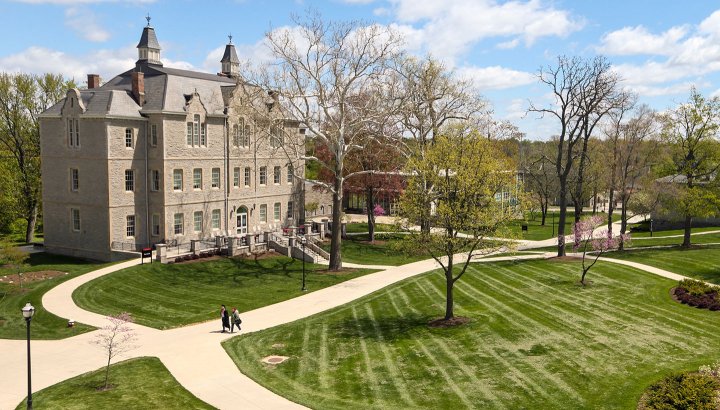

The real story is the creativity, ingenuity, and profound commitment you brought to the work before you. You never stopped. You persisted.
President, Ohio Wesleyan University
Moving the Needle on Student Success
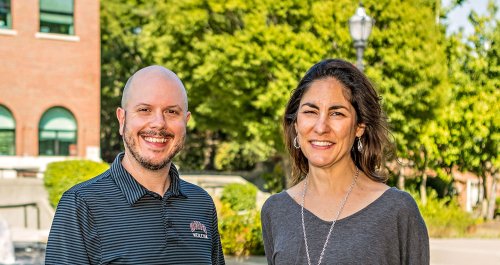 Ohio Wesleyan is partnering with Credo, a higher education consulting firm, in a 5-year initiative to enhance student success. Headed by Professor of Psychology Vicki DiLillo (right) and Dean of Student Services Brad Pulcini (left), the Moving the Needle project will unite the full campus community in developing, implementing, and enhancing the conditions, practices, systems, and solutions that foster student success and retention. Moving the Needle launched this autumn with a comprehensive assessment of the student experience across all aspects of campus life. Information gathered during this phase will guide our future work to enhance the student experience from enrollment to graduation.
Ohio Wesleyan is partnering with Credo, a higher education consulting firm, in a 5-year initiative to enhance student success. Headed by Professor of Psychology Vicki DiLillo (right) and Dean of Student Services Brad Pulcini (left), the Moving the Needle project will unite the full campus community in developing, implementing, and enhancing the conditions, practices, systems, and solutions that foster student success and retention. Moving the Needle launched this autumn with a comprehensive assessment of the student experience across all aspects of campus life. Information gathered during this phase will guide our future work to enhance the student experience from enrollment to graduation.
Six New Faculty Join OWU
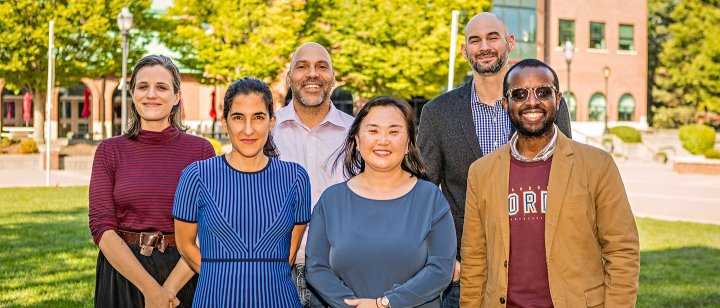
The six new assistant professors who joined OWU this fall share one important trait: interdisciplinarity. All are able to draw on multiple areas of study within their own courses, and they will work with faculty across other areas and divisions to create deeper learning opportunities for students. The new faculty are (as pictured from left):
Cortney Knipp, Performing Arts. MFA, University of Texas at Austin. An applied theatre facilitator and community-based artist, she was the inaugural artistic director and program manager of UVA Acts at the University of Virginia, an educational theatre program promoting equitable, vibrant spaces for working and learning.
Alejandra Rojas Silva, Fine Arts. Ph.D., Harvard University. Her research focuses on representations of the natural world in relation to indigenous, colonial, and contemporary forms of identity.
Brian Granger, Performing Arts. Ph.D., University of California-Santa Barbara; MFAs, Ohio State University and New York University. He is a theatre book writer, playwright, theatre scholar, songwriter, and actor/director whose works explore how we treat one another across race, gender, and class.
Bona Kang, Education. Ph.D., University of California, Berkeley. Her K-6 classroom experience includes teaching-research partnerships with a college-affiliated lab school in western Massachusetts, and her research interests focus on elementary school children’s cognition and development in mathematics.
Will Georgic, Economics. Ph.D., Ohio State University. His research explores environmental problems likely to worsen with climate change to inform more efficient policy decisions.
Antron Mahoney, Africana, Gender, and Identity Studies. Ph.D., University of Louisville. His research interests include critical explorations of embodiment and freedom, exploring race, gender, and sexuality theories and politics in the context of social movements and leadership.
Chief Diversity Officer Works Toward Antiracist Campus
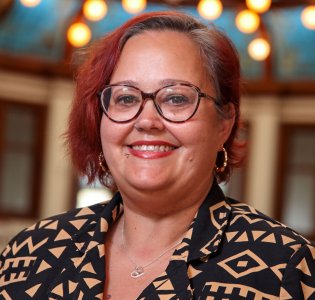 As OWU’s chief diversity officer, Dawn Chisebe, will work to lead, build, and strengthen Ohio Wesleyan’s diversity, equity, and inclusion strategies and initiatives.
As OWU’s chief diversity officer, Dawn Chisebe, will work to lead, build, and strengthen Ohio Wesleyan’s diversity, equity, and inclusion strategies and initiatives.
Chisebe had held the role on an interim basis for just over a year before being named to the permanent position at the end of September.
“Dawn Chisebe is tireless and fearless in her efforts to make Ohio Wesleyan an antiracist space, and the university already has made important strides thanks to her good work,” says President Rock Jones.
“I am truly honored to be able to continue to build relationships across campus and work together to strengthen our commitments to diversity, equity, and inclusion, and ensure that we are actively working toward being an antiracist campus,” Chisebe says. “I want to work closely with our students, staff, faculty, alumni, and our community partners as we move forward together.”
Chisebe reports to Jones and chairs OWU’s Diversity, Equity, and Inclusion (DEI) Council and oversees the DEI Grant program, created earlier this year to financially support projects by students and employees to advance the OWU campus as an antiracist space. She also continues to teach classes as a member of the Department of Africana, Gender, and Identity Studies.
